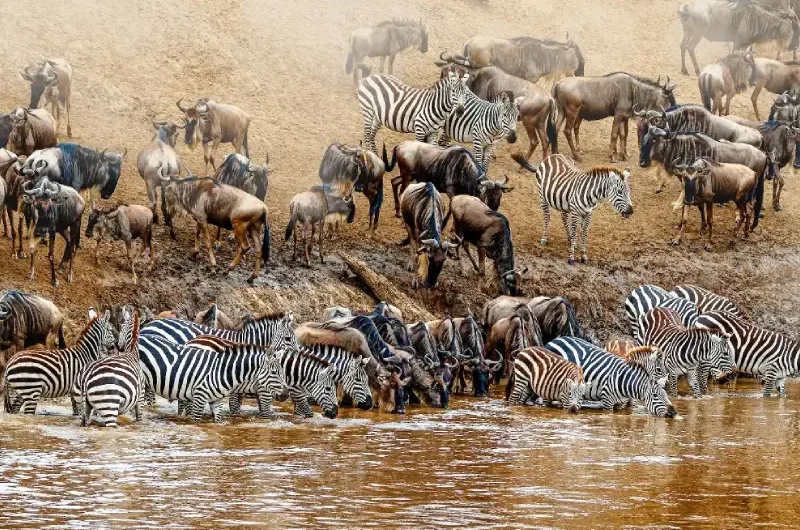What Happens During the Mara River Crossing
The Mara River crossing is one of the most dramatic and anticipated events of the Great Wildebeest Migration in Kenya’s Masai Mara. Millions of wildebeests, zebras, and gazelles move from the Serengeti in Tanzania into the Masai Mara in search of fresh grazing, creating a spectacle of life, survival, and raw nature. This thrilling event is a highlight for wildlife enthusiasts, photographers, and safari-goers alike.
The Timing of the River Crossing
The timing of the Mara River crossing depends on the movement of the herds and rainfall patterns. Typically, the crossings occur between July and October, during the peak migration season. The herds move in response to diminishing grasslands in Tanzania and are driven by instinct to find new pastures and water.
The Journey to the River
Before reaching the Mara River, the herds cover long distances across the plains, facing numerous challenges. The animals travel in tightly knit groups to protect themselves from predators such as lions, cheetahs, and hyenas. As they approach the river, tension builds within the herds. Many animals hesitate at the riverbank, sensing the dangers that lie ahead, including strong currents and lurking crocodiles.
Crossing the Mara River
The actual river crossing is a moment of high drama:
- Predator Encounters: Crocodiles lie in wait for weak or slower animals, creating tense and often dangerous moments.
- Drowning and Survival: Not all animals make it across safely; some drown in the strong current, while others become separated from the herd.
- Collective Movement: Despite the risks, the sheer size and instinctual drive of the herd propel them forward. The coordinated movement reduces the vulnerability of individual animals.
- Zebra Assistance: Zebras often lead the charge across the river, with wildebeests following closely, forming a protective pattern.
Spectacle for Observers
Watching a Mara River crossing is a once-in-a-lifetime experience:
- Photography Opportunities: The crossing provides dynamic action shots, capturing splashing water, predator-prey interactions, and the power of nature.
- Emotional Impact: Observers witness the raw struggle for survival, evoking awe and admiration for the resilience of these animals.
- Learning Experience: It offers insight into migration patterns, predator strategies, and the delicate balance of the ecosystem.
Safety and Best Viewing Tips
- Use Binoculars: Stay at a safe distance while getting close-up views of the crossing.
- Choose a High Vantage Point: Lookouts along the riverbanks provide panoramic views of the entire crossing.
- Be Patient: The herds may pause at the riverbank before crossing. Early morning and late afternoon often provide the best light for photography.
- Follow Guide Instructions: Safari guides ensure safety and help you position for optimal views without disturbing the wildlife.
Conclusion
The Mara River crossing is one of the most thrilling highlights of the Great Wildebeest Migration, symbolizing the raw power, instinct, and resilience of African wildlife. From tense moments at the riverbank to dramatic crossings with predators and strong currents, the event is both a spectacle of nature and a lesson in survival. Witnessing this natural phenomenon in the Masai Mara is an unforgettable experience for anyone on a migration safari, offering awe-inspiring memories that last a lifetime.


Comments